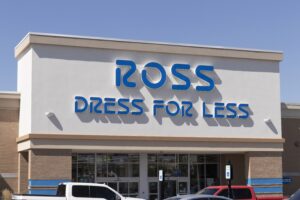
Photo: Getty Images/andresr
September 13, 2022
Is traditional advertising on the cusp of a comeback?
The 28th Edition of The CMO Survey found marketing budgets for traditional advertising increasing for the first time in a decade, although well below the expected growth rates for digital marketing in the coming year.
In a recent Harvard Business Review article, researchers led by Duke University’s Fuqua School of Business said traditional advertising’s newfound appeal is partly due to challenges associated with digital marketing, such as the annoyance of pop-up videos and other conventional online advertising approaches as well as the imminent demise of third-party cookie tracking and increasing doubts about digital marketing’s effectiveness.
Traditional advertising, at the same time, has long been trusted more by consumers, sees greater relative engagement as costs have fallen and stands to benefit from merging digital technologies such as URLs and QR codes, according to the researchers.
Finally, traditional marketing, in some cases, is said to still translate messages better than digital. The authors wrote, “For example, broadcast TV continues to offer an ideal platform for emotional storytelling ads, such as the clever ‘Welcome Back’ Guinness ad that marked the reopening of pubs and restaurants following the Covid-19 lockdown.”
A number of articles trace a potential revival of traditional advertising to credibility losses by online influencers. A recent consumer survey conducted by Wakefield Research for The Desire Company found only 11 percent of Americans believe influencers deliver trustworthy reviews.
The annual Gartner “2022 CMO Spend and Strategy Survey” found online advertising still expected to take the largest share (56 percent) of marketers’ dollars in 2022, with spending led by social advertising, closely followed by paid search and digital display. Offline channels are expected to see more spending than in recent years with Gartner identifying a shift from digital-first to hybrid multichannel strategies.
“There has been a lot of discussion around COVID-19 shifting consumers to a digital-first mindset. However, as Western Europe and North America relax pandemic protocols, customer journeys have recalibrated,” said Ewan McIntyre, chief of research and vice president analyst in the Gartner for Marketing Leaders practice, in a statement. “Post-lockdown, CMOs need to listen carefully to their customers and pay attention to the channels they are using, as this more closely resembles a hybrid reality.”
- 28th Edition: The CMO Survey
- Why Marketers Are Returning to Traditional Advertising – Harvard Business Review
- The End of the Influencer? Most Consumers Doubt Social Media Influencers Use the Products They Promote – The Desire Company
- Gartner Survey Reveals Marketing Budgets Have Increased to 9.5% of Overall Company Revenue in 2022 – Gartner
- Are ‘influencer fatigue’ and distrust signaling a comeback for traditional advertising? – Spark Media
- Are brands returning to traditional advertising? – Adnews
- Digital Advertising’s Woes And The Return To ‘Traditional Channels’ – MediaPost
Discussion Questions
DISCUSSION QUESTIONS: Do you see spending on traditional advertising media recovering, flattening or declining in the years ahead? Will any improvement likely be tied to traditional media becoming more effective or digital becoming less so?
Poll
BrainTrust
Lucille DeHart
Principal, MKT Marketing Services/Columbus Consulting
Recent Discussions







Did you watch traditional broadcast TV last night? Did you get your news from a traditional newspaper? Did you thumb through a traditional magazine?
One may list many reasons why traditional advertising produces better results, but that doesn’t matter if fewer and fewer eyes are following it.
I think the point is that there may be a recalibration going on in consumer/viewer media consumption whereby more eyes are paying attention to the 30 second TV spot because it may indeed be worthwhile to do so, as it once was more prevalent or more compelling or more motivating than a social post or an influencer advising the consumer on a particular product or service.
“It worked so well we stopped doing it!” That is almost what has happened with traditional advertising. The new channels changed the way brands advertised, and then someone noticed the void left in traditional advertising. So, why not take a shot at going back to what worked (past tense emphasized) to see if it works again? The nice thing is there is much less “noise” in the traditional channels than there used to be. And I’m not suggesting you abandon online and digital advertising. Just consider the opportunity that “the old way” can benefit you.
It’s not like there is a dearth of advertising on TV, folks. It’s marketers thinking we only pay attention to online ads. Now they are figuring out we never pay attention to online ads and, more importantly, are becoming less and less likely to believe what we read and hear online. Broadcast still yields a big bang for the buck, although my friend Joel Rubinson would argue that reach is irrelevant – it’s targeted reach that’s important.
So true. This past week spending time with family we watched Hulu because traditional broadcast is not of interest to my adult children. So click to “news” in the header and view streaming stories from ABC network news. I have the Subaru and VRBO spot memorized down to the intonation of the voiceover talent. The laziness of the media team to have ONE spot in rotation and/or the service provider allowing only ONE spot to run is mind numbing. Mix it up a little. No wonder “viewers” are tuning out. In this case the mute button was in high use waiting for the 25-30 seconds to pass so I could watch another story.
I think the marketing universe needs to better position “traditional” advertising and not bucket those media efforts based on their life in the media timeline. There is and will continue to be an emergence of the re-introduction of core advertising elements within marketing plans. Direct mail and print media are now in a much less cluttered space and will perform better compared to other vehicles, though they will target a much smaller audience. In a similar fashion, the fragmented streaming market is dissecting broad reach so we will see more impactful “broadcast” or “all cast” efforts from major national brands–think Super Bowl. Consumers are looking for a sense of shared community that consistently shifts. In addition, there must be a balance of introducing innovation and newness to any marketing plan. A balance of new/old and emerging media will be critical to success. Look for 3-dimensional marketing and vehicle messaging as driverless cars start to surface into the market.
It’s not just 2022 – paper costs were getting increasingly untenable in the Before Times and are completely out of control now – Producer Price Indices from just January to June this year include: printing ink +16 percent; bindery services +37 percent; coated printing paper +15 percent. Combine this with the ongoing delivery troubles and cost increases at the post office and you can see why catalog and flyer volume has tanked. My company sent about 2 million catalogs to teachers in the late-2000s – we do zero now; our retail price points just can’t justify that kind of marketing expense! For a great many small-to-medium brands, we’re stuck with digital and social.
Any resurgence in traditional advertising depends on the medium being used. Print media advertising continues to collapse, and traditional broadcast TV doesn’t capture the mass audience of the past. The advantages of cable TV advertising (especially the growth of hyperlocal commercials) are trumped by the cord-cutting trend. Streaming may represent the best hope for traditional media, especially as providers like Netflix start to add commercial-sponsored tiers to their plans.
The assumption being that consumers will pay to NOT watch commercials. The market will segment/separate over time. I don’t think the tiered approach will sustain itself over time.
Traditional advertising media will grow yet fall short of historic highs.
Ongoing media fragmentation has led to fewer eyeballs for traditional outlets. Yet these outlets are less crowded, prompting some companies to seek traditional media to stand out. Growth will rely on strong content that attracts audiences that align with advertisers’ markets.
Right now, digital is winning. Consumers start their product searches on Amazon, TikTok and Google. As consumption declines, big brands invest more in digital ads to compete. Hybrid multichannel strategies will rise as consumers embrace online-to-offline habits, like QR codes for in-store deals.
It’s not an either/or conversation — it’s a balance and while there was talk in the industry that traditional was “dead” – the pendulum always find equilibrium.
As an advertising major from what I consider the best program in the country – University of Illinois-Urbana, I truly get a whimsical giggle when I learn about new/emerging trends such as these. Fifty percent of advertising (whether traditional or read “old school”) works and 50 percent does not – you just don’t know which 50 percent still holds true. Digital is the right choice for all the right reasons. Why? Because it is measurable. Are there issues with product ratings, reviews, influencers, etc.? Sure. Just as there are with the sheer cost of a 30-second spot in prime time where the total viewership or household “using” television has declined by 50 percent vs. the three-network heyday of the bygone Mad Men era. Planners plan according to optimization based on who they are trying to reach and where the eyeballs are found. Reach, frequency and gross impressions as the standard guide remain in place – there are just an astonishing breadth and depth of options vs. the good old days when network television, national magazines, network radio, outdoor, transit and indeed newspapers held the bulk of spend. Glad I’m in the CRM/Loyalty space and can measure customer behavior at the individual level – evolution is grand!
The industrial advertising complex operating model has been irreversibly shifted due to changing consumer behaviors and the acceleration brought on by the digital revolution. While personalization at scale appears to be the holy grail for brands and retailers, traditional advertising will still have a place, especially with live and streaming events.
Some of the more iconic media advertising were commercials that played during the Super Bowl, which had everyone talking the next day. However, the rules of engagement have changed, as the target customers now are seamlessly navigating social media apps, such as TikTok, Instagram, and Snap Chat. Marketers and advertising companies will need to modify their strategies to take a more hybrid approach around authentic content creation while investing in traditional advertising platforms.
Part of “traditional” advertising has been the FSI that consumers relied on for their grocery shopping deals and coupons. It’s gone digital but simultaneously retained paper distribution. That suggests to me there needs to be a strategic balance when the investment increases for other components of “traditional” advertising. The advantage of an FSI is that consumers who read it are looking for ads … it’s all ads. Other media depend on attracting attention and generating involvement. It’s not just about an investment — it’s dependent on the effectiveness of the advertising.
I didn’t see “traditional advertising” defined here, so right off the bat this comes across as either nostalgic or defensive. I’ll assume it means print and broadcast, so looking at those two — i.e. actually seeing what we’re talking about — it’s hard to get very optimistic. Newspapers and magazines operate with the idea that we’ve reached absolute rock bottom — proven wrong with every new circ report — and radio and TV are only marginally better. I’ll go with “flattening,” but it’s only out of optimism … or charity, take your pick.
You can bucket marketing activities in a variety of ways, but two simple ones are to obtain new customers and increase share of wallet. These are very different actions though, and while more traditional forms of media may (or may not) be making a comeback, these are becoming more and more irrelevant in share of wallet discussions. Many retailers are looking at their own loyalty programs, apps, meta-spaces, etc. to drive in store sales and share of wallet. As consumers continue the trend toward BOPIS, delivery, in-home and other “channels” of physical consumption, the marketing needs to keep pace.
It’s unclear to me if the last statement is about media channels or shopping/consumption channels, but the last quote is most impactful to me: “listen carefully to their customers and pay attention to the channels they are using.”